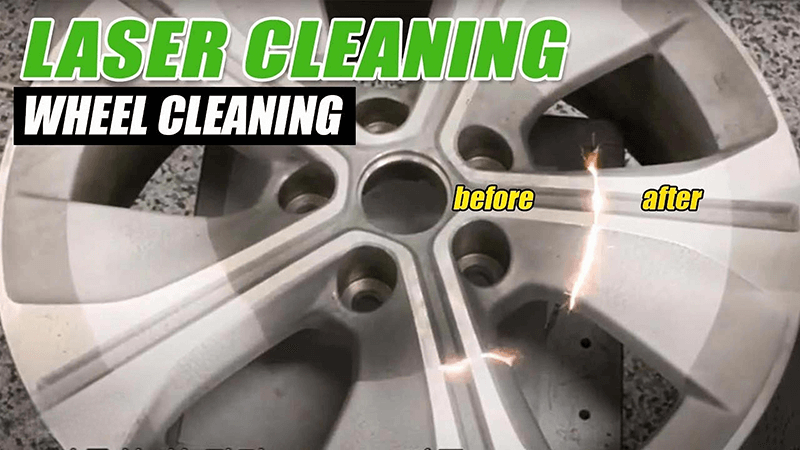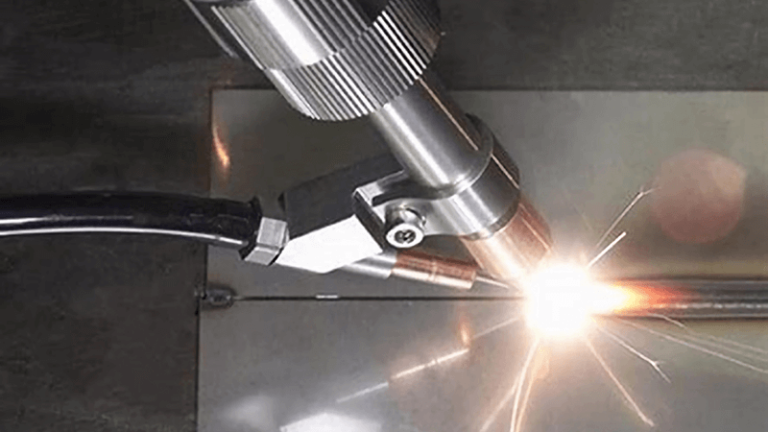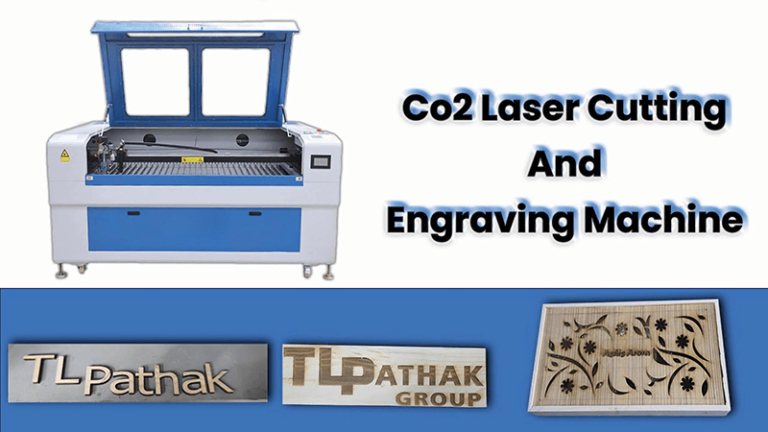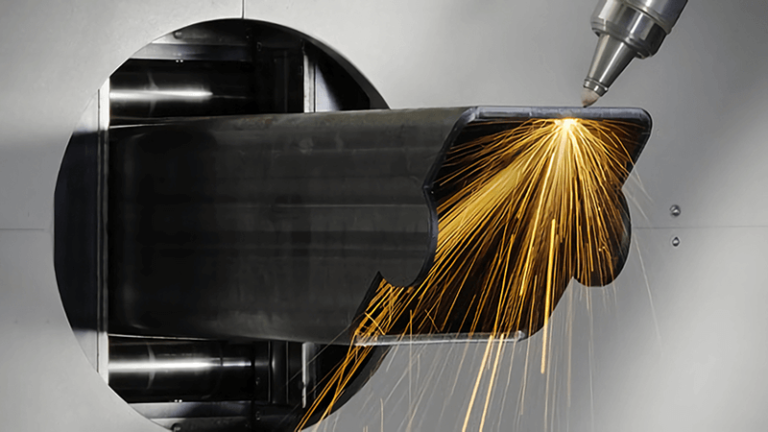Laser cleaning machines are changing the way industries approach cleaning tasks. By offering speed, precision, and environmental benefits, these machines are proving to be a game-changer in various industrial applications. But how exactly do they save time and money? Let's explore.
Laser cleaning machines are revolutionizing industrial cleaning by offering faster, more precise, and environmentally friendly solutions. Compared to traditional cleaning methods, they reduce downtime, maintenance costs, and waste disposal expenses, all while improving product quality and boosting productivity.
To truly understand the value of laser cleaning machines, let's dive into the various applications, how they work, and why they are quickly becoming the preferred choice over traditional cleaning methods.

What are the applications of laser cleaning?
Laser cleaning machines are increasingly used across various industries due to their versatility and efficiency. From automotive to aerospace, these machines are becoming integral in maintaining the cleanliness of surfaces that require precise treatment.
Laser cleaning machines are used in a wide range of applications, including rust removal, paint stripping, and surface preparation for welding or coating. Their ability to clean without damaging underlying materials makes them invaluable in industries such as automotive, aerospace, and manufacturing.
Laser cleaning technology is used in numerous industrial fields, offering a wide range of applications. One of the most common uses is rust removal. In industries like automotive or shipbuilding, rust is a common issue that can affect the integrity and appearance of metal surfaces. Traditional methods of rust removal1 can be time-consuming and costly, but laser cleaning offers a much faster, more precise solution. The laser effectively targets the rust, leaving the underlying metal unharmed.
Another key application is paint stripping2. Laser cleaning machines are ideal for removing layers of paint from metal surfaces, especially in industries like aerospace and automotive, where maintaining the integrity of the base material is crucial. Traditional methods, such as sandblasting or chemical stripping, can be harsh and may damage the surface, but lasers provide a controlled, effective cleaning process without any harmful effects.
Laser cleaning is also used in surface preparation for welding3, coating, or other processes. For welding, it’s critical to have a clean, contamination-free surface to ensure a strong bond. Laser cleaning ensures that the surface is properly prepared without introducing any contaminants, which can compromise the final product.
In the manufacturing sector, laser cleaning is increasingly used for general surface cleaning and maintenance. Unlike traditional methods that rely on abrasives or chemicals, laser cleaning is a non-contact process, which means it can clean delicate surfaces without causing wear or damage. This non-abrasive quality is one of the reasons laser cleaning has gained popularity in industries where precision and quality are paramount.
To give you a better overview, here’s a comparison of laser cleaning applications across various industries:
| Industry | Application | Benefits |
|---|---|---|
| Automotive | Rust removal, paint stripping | High precision, no damage to surface |
| Aerospace | Surface preparation, paint removal | No impact on sensitive materials |
| Manufacturing | General surface cleaning, maintenance | Fast, efficient, no abrasive waste |
| Shipbuilding | Removal of corrosion and contaminants | Safe, non-toxic, reduces downtime |
| Electronics | Cleaning delicate parts and components | Precise, ensures product integrity |

What does a laser cleaning machine do?
Laser cleaning machines are highly specialized tools that use focused laser beams to remove contaminants, rust, coatings, or other unwanted materials from surfaces. But how exactly do they work, and why are they so effective?
A laser cleaning machine uses high-intensity laser beams to break down and remove contaminants from surfaces. The energy from the laser vaporizes or lifts away the material without damaging the underlying substrate, making it a highly effective and precise cleaning solution.
Laser cleaning involves directing high-powered laser beams onto the material to be cleaned. These lasers generate intense energy that interacts with the contaminants (such as rust, oil, or coatings) and causes them to vaporize or be expelled from the surface. Unlike traditional cleaning methods4, laser cleaning is non-contact, meaning that the laser doesn’t physically touch the material being cleaned, which eliminates the risk of surface damage.
The energy absorbed by the contaminants causes them to break down into particles, which are then carried away by the force of the laser or simply vaporize into gas. The laser parameters, such as intensity, frequency, and duration, are adjustable to accommodate different cleaning needs. This means the process can be fine-tuned for various materials and types of contaminants, making laser cleaning highly versatile.
One of the most significant advantages of laser cleaning5 is that it is a highly controlled process. Traditional cleaning methods, such as sandblasting or chemical cleaning, can sometimes lead to inconsistent results, and the abrasives or chemicals used can cause surface damage. Laser cleaning, on the other hand, provides precision and control, ensuring that only the contaminants are removed while preserving the integrity of the underlying material.
Additionally, laser cleaning is an environmentally friendly solution6. Traditional methods often require the use of hazardous chemicals or produce harmful dust and waste. In contrast, laser cleaning is a dry, non-toxic process that does not produce waste or require harsh chemicals, making it safer for workers and the environment.
To better illustrate how the process works, here's a breakdown of the laser cleaning steps:
| Step | Process | Details |
|---|---|---|
| Step 1: Laser Emission | High-intensity laser is directed at surface | Laser beam targets contaminants without contact |
| Step 2: Material Interaction | Contaminants absorb laser energy | Causes contaminants to vaporize or be removed |
| Step 3: Waste Removal | Vaporized material is expelled from surface | No waste left behind, process is clean and dry |
| Step 4: Surface Condition | Laser cleaning leaves surface intact | Ensures surface integrity and prepares for next process |

What are the benefits of laser cleaning?
The benefits of laser cleaning go beyond just precision and speed. From cost savings to environmental advantages, these machines provide numerous advantages that make them the preferred choice in many industrial settings.
Laser cleaning offers several benefits, including reduced operational costs, minimal waste production, and a safer working environment. These machines also provide faster cleaning times and can be easily integrated into existing systems, making them a valuable asset for any industrial application.
Laser cleaning offers a multitude of benefits that make it stand out as a superior cleaning solution. One of the primary advantages is the cost-effectiveness7 of the process. Unlike traditional cleaning methods that rely on consumables like abrasives or chemicals, laser cleaning machines require minimal materials. The laser itself is the primary tool, which results in a significant reduction in material costs.
In addition to cost savings, laser cleaning is highly efficient. The cleaning process is faster than many traditional methods, which means businesses can reduce their downtime and get back to production quicker. This increase in efficiency also helps businesses optimize their workflows and improve overall productivity. The reduced downtime leads to fewer delays in production and a quicker return on investment.
Another important benefit of laser cleaning is its environmental impact8. Traditional methods, such as sandblasting or chemical cleaning, produce waste and harmful byproducts that require disposal. Laser cleaning, however, is a dry, non-toxic process that generates little to no waste. This makes it a more sustainable and eco-friendly solution, which is important in industries that are increasingly focusing on reducing their environmental footprint.
Laser cleaning also improves safety in the workplace. Traditional cleaning methods often involve the use of harsh chemicals, which can pose health risks to workers. Sandblasting, for example, generates harmful dust particles that can be inhaled, leading to respiratory issues. Laser cleaning eliminates these health hazards by using a non-abrasive, non-toxic process that doesn't release harmful substances into the air.
Here’s a detailed look at some of the key benefits of laser cleaning:
| Benefit | Description | Impact on Business |
|---|---|---|
| Cost Savings | No need for abrasives or chemicals | Lower operational costs |
| Efficiency | Faster cleaning process, less downtime | Quicker return to production, higher productivity |
| Environmental Impact | Generates minimal waste and no toxic byproducts | Sustainable, reduces waste disposal costs |
| Safety | No hazardous dust or chemicals | Improved worker safety9 and health |
| Precision | High accuracy, no damage to underlying materials | Ensures high-quality results and surface integrity |

Is laser cleaning better than sandblasting?
While sandblasting has long been a standard cleaning method, laser cleaning offers several advantages that make it a more appealing option in many cases. But is it truly better than sandblasting?
Laser cleaning outperforms sandblasting in several areas, including precision, environmental impact, and cost. Unlike sandblasting, laser cleaning does not require abrasive materials or generate harmful dust, making it a safer and more sustainable choice.
When comparing laser cleaning to sandblasting, one of the key differences is the precision with which each method works. Sandblasting relies on abrasives that can cause wear and tear on surfaces, especially delicate or thin materials. Laser cleaning, however, is non-contact and highly controlled, which allows it to clean without damaging the underlying material. This makes laser cleaning10 a superior choice when working with sensitive or high-precision components.
Another major advantage of laser cleaning is its environmental impact. Sandblasting generates a significant amount of dust and waste, requiring additional time and resources to clean up. The abrasives used in sandblasting11 also need to be replaced regularly, contributing to ongoing material costs. In contrast, laser cleaning generates minimal waste and does not rely on abrasive materials, making it a more environmentally friendly and cost-effective option in the long run.
Furthermore, laser cleaning creates a safer working environment. Sandblasting involves high-pressure equipment and can release harmful particles into the air, creating health risks for workers. Laser cleaning eliminates these risks by being a non-abrasive, non-toxic process that does not expose workers to harmful substances.
In terms of efficiency, laser cleaning is faster and requires less maintenance than sandblasting. Sandblasting equipment often requires regular upkeep and replacement of parts, which can lead to additional costs and downtime. Laser cleaning machines, on the other hand, are highly reliable and require minimal maintenance, allowing for more consistent operations and less downtime.
While sandblasting may still be useful in some heavy-duty applications, laser cleaning offers clear advantages in precision, environmental sustainability, safety, and long-term cost savings.

Conclusion
Laser cleaning machines[^12] are proving to be a revolutionary tool in industrial applications. With their ability to save time, reduce costs, and improve safety, they are quickly replacing traditional cleaning methods like sandblasting. By offering a precise, efficient, and environmentally friendly solution, laser cleaning is an investment that will benefit industries for years to come.
-
Explore how laser cleaning technology revolutionizes rust removal, offering faster and more precise solutions for various industries. ↩
-
Discover the advantages of using laser cleaning for paint stripping, ensuring surface integrity without damage. ↩
-
Learn about the critical role of laser cleaning in preparing surfaces for welding, ensuring strong and contamination-free bonds. ↩
-
Understand the limitations of traditional cleaning methods and why laser cleaning offers a superior alternative. ↩
-
Explore the advantages of laser cleaning technology, including its precision, control, and environmental benefits. ↩
-
Learn how laser cleaning minimizes waste and avoids harmful chemicals, making it a safer choice for the environment. ↩
-
Explore how laser cleaning can save costs compared to traditional methods, enhancing your business's bottom line. ↩
-
Learn about the eco-friendly advantages of laser cleaning and its minimal waste production, crucial for sustainable practices. ↩
-
Discover how laser cleaning improves workplace safety by eliminating harmful chemicals and dust, protecting your workforce. ↩
-
Explore the advantages of laser cleaning, including precision and environmental benefits, to understand why it's a superior choice. ↩
-
Kirin Laser has different laser cleaning machinnes, such as pulsed laser cleaning machine and cw laser cleaninng machinne. ↩





